
Today, we have the pleasure of speaking with Mac McGuire, a senior product line manager at Puma. Mac focuses on high performance footwear. With over seven years in the industry, Mac has extensive experience managing product lines, bringing product innovations to market and working on collaborative product drops with the athletes, brands, and entertainment assets.
Tell us about yourself and how you became the senior product line manager for men’s performance footwear at Puma?
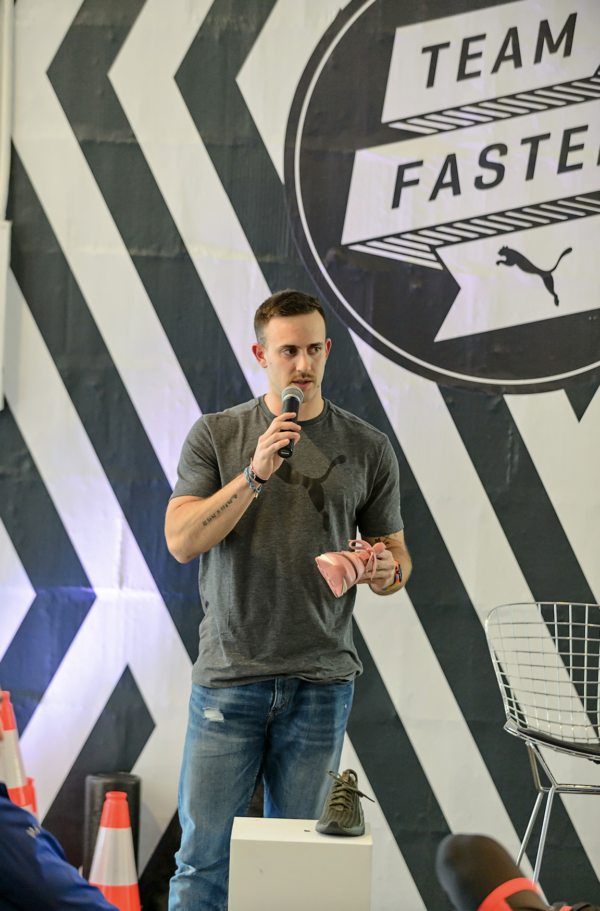
Mac McGuire: I’ve been an athlete all my life. Through that, footwear was always really important from a performance standpoint, also that fashionable vibe was always a big thing to me. As I moved out of Texas into Boston for university, I got a little bit more into street wear, and sneakers. From there I knew this would be cool to work on so I networked a little bit, found someone that also played soccer at Boston University and applied to some internships at Puma. Luckily, I was able to land one in Germany, overseas at our headquarters. From there, I thought to myself “how do I turn this into a full-time career?” I was hooked. Fortunately, I was able to join the running and training team, and then just over the years, kind of built up, and now I’m one of the senior product line managers on the team and it’s been a great ride so far.
Steve Cunningham: That’s really great. It sounds like you really connected a passion with work and did what I think everyone hopes to do in their careers so that’s awesome.
Is it fair to say that the athlete in you, when you were younger has kind of influenced your desire to be in this field?
Mac McGuire: Absolutely. Even from performance standpoint, it’s kind of just landed in my lap where, when I was an intern, I was working on more of a style focused footwear and that was really cool for me as well. Then, when the running and training opportunity came up at Puma, I’m like, this is amazing. I was a big track guy when I was younger. I like to stay in the gym as much as possible to try and stay fit. Also, just being a soccer player all my life you’re influenced by these brands. I wore Puma when I was younger, so to now be on the team and know the people that make the products is kind of a dream come true.
How you’ve seen the consumer demand and interest shift over the last seven years?
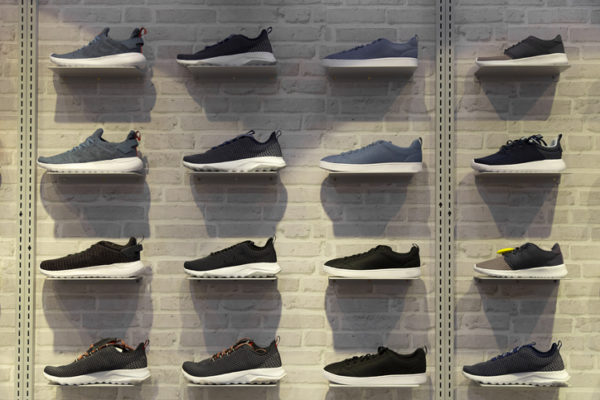
Mac McGuire: Yeah, absolutely. Puma’s always been a brand that lives at this intersection of fashion and performance so through the years we’ve continued to build products right at that intersection. Our CEO (Bjørn Gulden) has pushed us to continue to build our product at that intersection of fashion and performance, but also while going to the extreme. So essentially what’s the high fashion angle look like, and also what’s the high-performance angle look like? When I started, we were definitely a little bit more in that intersection and some of our product definitely resonated with consumers.
Mac McGuire: What I can say is that there’s been a big shift now in terms of performance footwear and how we market to these athletes. Social media has gotten way bigger. There are more and more athletes being signed. When I started, we didn’t have any professional runners, or CrossFiters, or anything like that in our portfolio, and you can see from our focus that we’ve put a lot of our marketing dollars into that because we know that’s now resonating more with consumers more than ever to be honest.
Mac McGuire: One shift has been just brand heat. I think a lot of the stuff that we’ve done, marketing wise, and just building the right product for the right consumer groups has helped us carve out space in the market where we live, and also just consumer mindsets. It’s not so much about just going to Nike Town or a Puma store and buying a shoe on the wall, now there’s so much more opportunity to get influenced by social media and advertisements and all of that into what you’re buying before you go to the store or before you go to the website because you’ve been influenced. We’ve really been great in my opinion on kind of targeting that and driving people into buying the right products for their right needs. So definitely seen a big shift in consumers, also in our strategy and how we attack this space. So, it’s been pretty cool to see.
Steve Cunningham: Yeah, it is really interesting the influence of social media and the influences on there, and also just, we all have all the information at the tips of our fingers now, right? So, when you go into a store, like you said, you can make an easier decision, at least when you’re in there, because you’ve already educated yourself on it.
Do the partners, athletes, and influencers that you work with get any say in any the influence of the designs?

Mac McGuire: Absolutely, and that’s a big part of it. When we connect with athletes, it’s a tiered approach. So, we have our kind of lower tier where we seed them products and they wear it, post about it, hopefully it’s authentic and they’re not just wearing it for the contractual obligations. We try to find those people that really connect with the brand and then as you get to the higher tiers, we definitely get them involved. So, on a weekly and monthly basis I’m on calls with some of our professional CrossFit athletes, I know our running team is also connecting with some of our Olympic athletes and key performance people that we have as part of the brand now. What we do is we kind of pull them into the wear testing process.
Mac McGuire: It’s great when you can tell them about a shoe, “Hey, we’re going to have you wear this. We think you’ll really love. It’ll help you in the gym or on the track,” but what’s even better than that is because they are such a big validator of the shoe, of the technology, of the target consumers that we’re going for, when we can pull them into the wear testing process and what that means is, when we get our first prototypes, we’ll send them right over to them, “Hey, wear this in the gym a couple times this week, let us know what you think.” Then we have that built in our timeline where we can kind of get their feedback and change aspects of the shoe. And so that’s been another big thing that we’ve really focused on, consumer first. And when you have these big validators, it’s such a great opportunity to listen to their feedback and build it into the shoe if you have the capacity and the timeline for that and if you don’t do that, I think it’s a really big miss.
Steve Cunningham: Yeah, I’d agree. I mean, that’s valuable feedback, and like you said, with the consumer being the end goal of satisfying them, I mean, that’s valuable input if you can implement it into the product.
Is it kind of a two-way street where if they’re going to be promoting for you guys, they have some creative input in that process?
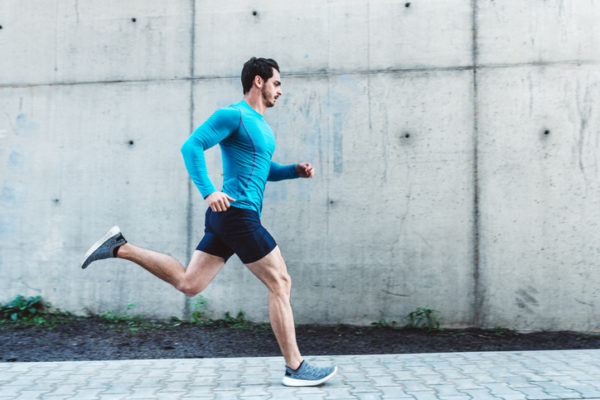
Mac McGuire: Absolutely. Plus, it really enhances the partnership too. We have these athletes come to our headquarters in Boston and some of them have a pretty cool awareness on how footwear is made and what they’re looking for, others haven’t had any scope into that yet. So, it really gives them an opportunity to learn, this is more than a shoe. A lot of thought goes into it, a lot of strategy and when they can help with that, they’re more involved, more engaged with the brand, and more inclined to just be a really great partner for us. So, we like it from multiple aspects.
Steve Cunningham: Yeah, and that’s probably why it translates into more authentic marketing when you’re working with them, right, because they have some buy in, they have some input in it. So that makes complete sense. You’re focusing on the men’s footwear line for the most part.
How do you identify men’s intricate running and training needs in your target markets?
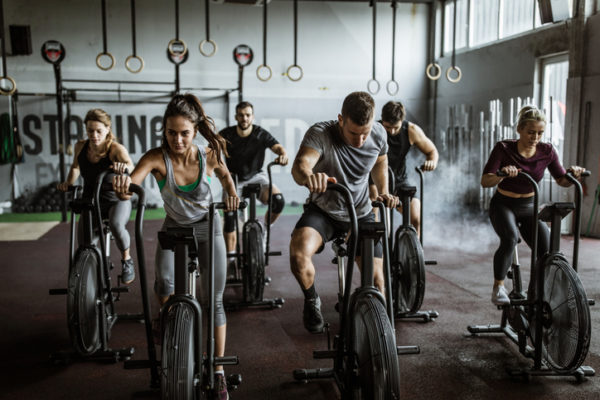
Mac McGuire: Some of them are a very clear cut and understandable, right? If you have a running shoe, you need to build options that fit the foot correctly and work with people’s feet as they pronate, or over pronate, and all of that stuff, right? So, some of it is very clear cut. And then the other part of it is really led by our development team. So, when you make a shoe that you want people to just wear with a pair of jeans and walk around, and course you still need to make it comfortable fit well, all of that, but when it’s not performing at a really high capacity, there’s some corners that you can cut and things that you don’t need to think about, right? So, when you’re building these high-performance technologies, what we do is if we’re not the experts, if we’re just really good at building the shoes as they should be, we’ll go connect with the consumers that we’re trying to target with these projects.
Mac McGuire: So, I said it before, but consumer first is a big mentality and that’s price point and also trading off what we want to be important in this shoe. Is comfort the most important, is price value, is supports, is rigidity with a TPU plate, all of that stuff can help us kind of carve out what this shoe needs to accomplish and where we should go in this direction. Then from a training side, also clear-cut things, right, lateral stability, flexibility, it needs to fit really well in the upper, needs to hug your foot nice and tight, it needs to be comfortable, lightweight, all of that. A cool example of this has been as we kind of target CrossFit more and more, has been a big push for us on the training side. And we’ve already signed some really great athletes like Chandler Smith, and Sam Kwant, Anastasia Lowe, amongst others, many others.

Mac McGuire: So, in there, right, it all depends. Maybe our designers are into CrossFit and maybe they’re not, regardless, these guys are incredible in kind of taking feedback and building that into a shoe. And then we really lean on our athletes to tell us the specific movements that they’ll need, right? And it’s things you might not think about, right? There are handstand pushups. Okay, that doesn’t seem like footwear would be that important, but it really is because your feet are kind of pressed up against the wall as you’re doing it. So, what’s the heel shape look like? Is it able to hug the wall and give you that support? When you’re doing box jumps is lightweight good, is flexibility good, is too much flexibility bad? All these intricate things that we’re able to learn from them and build into our shoe.
Mac McGuire: Then we have a 3D team as well that models it, and then prints out a 3D printed version of the sole of the shoe, the mid-sole and the outsole, and his name’s Jerry Ni. He is one of the people that I’ve learned the most about footwear and how it works. And he really digs into those details and tells you, “This will work. This might not work because of X, Y, Z, right.?” So, seeing that come to life from the feedback, that’s the cool part. That’s how we’re able to make sure this is a high performing shoe. And then, like I said, we get it in the athlete’s hands or in their feet to be more specific and get them rolling with it. From there, we’re able to see, did we get this right, are there aspects that we left out that we need to target, and really keep in that consumer first mentality is how we understand those intricate things.
Steve Cunningham: That’s so interesting, like different sports and what’s important for the footwear in that particular sport is just stuff that I would say the majority of people don’t even think about, even myself. I run, and for me, for the longest time, it was just is it comfortable, and is it lightweight enough for me to just run? I’m not doing this necessarily competitively.
Mac McGuire: Right.
Steve Cunningham: However, now it’s, okay, there’s so many other factors that have been introduced to consumer, how is your foot landing, you’re landing on the outside, on the inside, I know you have more technical terms for that. And what type of foam is used in this shoe, and is it designed for running or is it designed for something else? And it’s just progress, right, the innovation and the consumer learning more about what’s going into the product. It’s really cool.
Mac McGuire: No, absolutely. And what you said, it kind of reminds me about how we used to build our running and training shoes before we really dug into being a credible performance brand. We were still trying, we built shoes that would definitely work in a running or training capacity, but we didn’t go as deep as we’re going now. And so, we to just have our designers design a running shoe, right, at 110 bucks, here’s the target cost, here’s the margin we want to make on it, and show us what you got. And that used to work for us, right?
Mac McGuire: Now when we look at these designs, every single aspect on the shoe, it should have a purpose, otherwise, it shouldn’t be there. And so that’s also a big change in how I kind of oversee the projects that we’re working on, the shoes that we’re making, what’s this piece, what’s its purpose? If it doesn’t have a purpose, do we need it? Is it there for aesthetics? Is it there for support, traction, et cetera, et cetera? So that’s another big thing, right, listening to the feedback and then making sure that we’re designing with a purpose from the get go. Every piece should make this shoe a better performing asset for you. So, you’re spot on with that.
What are the best ways of identifying innovative technologies when you’re creating new products each season?
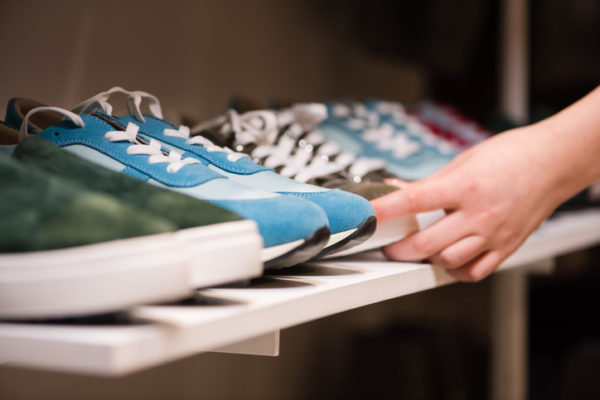
Steve Cunningham: Obviously, there’s these different factors for each product segment, but in terms of looking away and looking at competitors and how you differentiate and innovate, how do you guys go about that?
Mac McGuire: Absolutely. So, innovations are everything, they drive that top tier of product, right? Might not be your top sellers, because it usually has a nice expensive price point to go along with it. But what it does is when you have those really key innovations and every brand does this, you can have that a top and then you can pull it down into a little bit lower price point, inspired by that new innovation. And that’s where you get your really big volume driving forward options. But if we focus right at the top where that innovation is, most of our innovation comes from our innovation team, and so it’s a group of people that sit in our German headquarters and these guys are incredible. And so, it goes two routes if I could summarize it.
Mac McGuire: One route is, they try some cool stuff, right? “Hey, we thought this was cool. This is kind of an innovative way to make a foam mid-sole, or this is a new weaving technique that we can use for the uppers. Thought you guys might like.” And a lot of times we do like it and we pull it in if we can. And the second one is solving a problem, and this is really the key one, right? So, problems can be very simple or very complex, right? We know that Nike, Adidas have a running shoe, their top running shoe, it weighs 8.7 ounces. I’m making that number up. But for example, how can we achieve a same type of shoe, high performance, it holds up or is better than the competition, but how can we undercut that weight by an ounce and a half? And so, we’ll have them go with that, right? And these guys engineer the shoe, take things out, try to get the weight down, they can help us solve that problem.
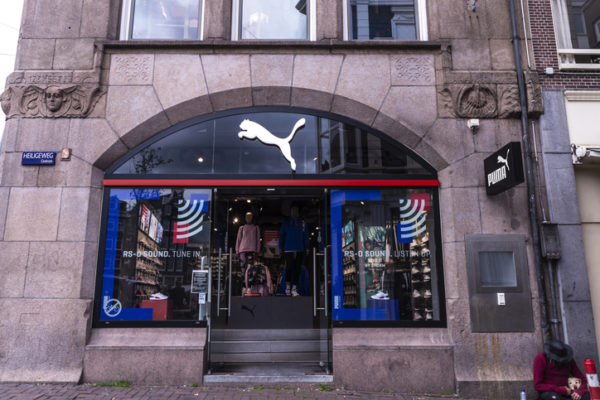
Mac McGuire: That’s one way where we kind of brief in, “Hey, we would love to solve this problem. It’s not in the market right now. If we could do it will be really impactful.” That’s kind of a big way, especially from a performance aspect, that one, we make sure we bring some innovative things to market, and two, we make sure that we’re at least benchmarking with our competitors in the space. So, they’ve always been great about helping us solve those in really unique ways. The other route is kind of data focused, right? So along with the innovation, what’s the data behind it? How have we tested this? I’ll give an example. We brought a really cool, unique technology called “Xetic” to market. And this is focused on the study of auxetic, which is how a group of shapes conform together to provide rebound, basically.
Mac McGuire: We had a university in Massachusetts, I’m not allowed to say which one, but a very, very, very, very credible university, their engineering department study this and say, “From a mathematical standpoint, this shape is the best shape that you should put in your shoe. And this come combination of the shapes is the best combination. And this size of the shape is the best.” And the data proved it, this was the best combination of shapes. And so, we took that shape, it was a recurve, kind of like an infinity sign, and we put holes through the whole shoe. And so, we cut that shape out of it and you could look through it and see through it. And it had the combination of that shape, we call it the recurve. From a mathematical standpoint, this was the perfect shoe for performance running. And so that’s how it was framed to us.
Mac McGuire: Then the second big part of innovation is feasibility, right? So, once we have it, do we have the manufacturing capacity to do it? Do we have the capabilities? Do we need to buy machinery? How many pairs of this do we think we’ll have, because those will get amortized on a pair-by-pair basis? And from there we can kind of work out, yes, we’re going to be able to do this, no, we’re not going to be able to do this until 2025, 2026, or we can learn kind of the minimum order quantity that we would need to hit in order to make this feasible. And then we can take that to our regions, our merchandising and sales teams, and say, “Could you guys support 250,000 pairs of this? If so, we can do it.” And so sometimes we see really cool stuff and then we realize this actually isn’t possible with them in machinery that we have. We’d have to outsource or we’d have to buy more machinery.
Mac McGuire: Also checking into that feasibility part of it is a big thing, right, and kind of understanding what else is in the line? How will this innovation fit with what we’re currently doing? All of that thought process, when it comes together, it’s incredible launching a new brand platform. Then it comes into marketing’s hands, how do we tell this story to the consumer? Is it easy to tell, does it have a visual aspect, or do we need something in person where you can really touch and feel it? How do we activate it? All of that, it seems very complex and it sure is, but when it comes to together, it’s really amazing. And for every brand it happens only once a couple years, where they launch a big new technology. From there, you kind of let that breathe in the market until you get ready to launch something else new. So, kind of a rarity a little bit, but when you have it’s a really cool thing to be a part of.
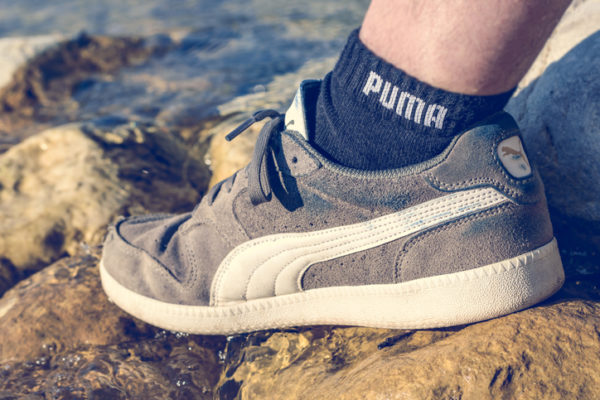
Steve Cunningham: Yes, and as a marketing director, I find that process fascinating, and just in my own research, it seems you guys have done a good job based on what you just told me, all the complexities behind some of these designs and working with university and engineering teams breaking down this is optimal for achieving X, Y, and Z, and taking something so technical and repackaging it as a message that the consumer can both understand and be motivated to buy, right? And I think that process, post-design, that alone is such an interesting challenge that I think you guys have done a really good job on.
Mac McGuire: Thank you. It really is a cool part of our business and it’s also about staying flexible. Our first goal was to launch it as a performance running shoe, and when we started to make it, we realized the type of foam that we have to use was a little bit heavier and the thickness that we needed to get that perfect row of shapes needed to be a little bit higher. So, it ended up being heavier than we wanted it to. We realized maybe this isn’t right for performance running, but from a style perspective, this has such a cool visual impact and stands out from everything in the marketplace. We still thought it was a great idea to go forward with. And it’s been out in the market now for a little over a year now, and it’s been a really cool project for us. So, a lot of things go in when you launch an innovation, but like I said, when it comes together, it is a really cool thing.
Steve Cunningham: Is almost all of it done through the lens of sustainability? Obviously, we know from a consumer level and retailer level, there’s increasing pressure to make things more and more sustainable. Is that a big part of your process as well?
Mac McGuire: It’s a big part. Yes. And so, it’s tradeoffs, right? So, when you’re thinking high performance, it’s amazing if you can build sustainability into it as well. But sometimes when you get into that recycled content or bio-based contents, maybe the performance metrics drop off a little bit just because of the compound and the nature of it. And so, you pick your battles, right? If there’s one sustainability aspect is going to kind of weigh us down right here, it’s not right for this, then maybe we also target a second innovation around sustainability. And I will say that we have a brand target for sustainability that by 2025, we want to be X percent fully sustainable.
Mac McGuire: We really achieve that target year over year and we’re doing a great job. We have a guy on my team, Greg Palazzo, he’s kind of our sustainability guy and works with innovation and also our suppliers to make sure that we have all of that covered. And we’re doing a great job at building sustainable forward options. And sometimes that’s the key story of the shoe and people buy it because it’s sustainable, and other times, the whole shoe is just sustainable and you might never know. But we’re still doing that to make an impact on the industry. And we know that’s where things are heading in the future and where we for sure need to go. So yes, it is top of mind, week to week for us, for sure.
What are some cool projects you’re working on? Anything new and innovative that you can speak of here?
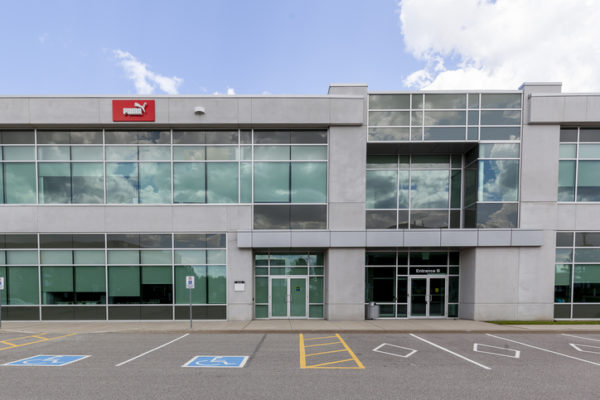
Mac McGuire: Yeah, absolutely. Couple things come to mind. One is with our nitro foam, which is our key running performance technology. So, this is a nitrogen infused foam basically. And what that does is, on a chemical level, the foam is very porous. So, there’s a lot of holes through it. You can’t see it with your naked eye, but when you pick it up, it’s extremely lightweight, and when you put it on, it’s extremely bouncy. And so, it’s been a really cool thing. And a lot of our competitors are in this space as well, Nike, Adidas, Sketchers even, they all have this kind of nitrogen infused foam. What we’ve been able to do is target weight as a key aspect for us. And running’s doing an incredible job, we’re staying true to nitro foam for the foreseeable future.
Mac McGuire: Now we felt that, where else can we use this in the line? How can we expand this and target something else fresh? And so, taking innovations and seeing, okay, this is a great thing that we’ve been able to create, how can we expand that into the line? That’s going to be a really exciting thing for us going forward, where else we can plug that in the line. Another thing is in the CrossFit space. As we have this growing and larger portfolio of athletes, how do we attack this space? Are there other footwear options that people might need in a weightlifting capacity or in CrossFit specific events? We know that they’re on kind of a turf field, sometimes they’re on more of like a track other time, and when you go to the CrossFit games or a CrossFit competition, you can see them changing their footwear. Sometimes they’re in soccer cleats, or American Football turf shoes and they have to go back and forth to these different footwear options.
Mac McGuire: And so, what we’re doing right now is really looking at that space and trying to continue to drive our image, our brand into the CrossFit consumer’s mind. And we have some really exciting things coming up in that space. And Fuse is our key CrossFit shoe that we’ve launched, and we’re already looking into what does the second iteration look like, what does the third iteration look like, and each one with our athletes is getting better and better and better. And it’s been a really amazing thing to work on and get involved in that community because they’re so equipment focused that if you can’t justify every detail on the shoe, how it makes an impact in your CrossFit workout, they’re not going to buy it, they’ll buy something else. And so that’s been a really cool thing from an innovation standpoint that we’ve targeted and will continue to target in the near future.
Steve Cunningham: It seems like you guys have identified that as a growing market and which makes sense, it’s not something that I personally do or follow very closely, but just hearing you talk about earlier for whatever the different exercise may be, what the shoe needs to do is just… It’s so interesting. So, I feel like you really need to really get into that market, understand all those factors, and then you can start building your brand in there.
Mac McGuire: Absolutely. If you can go to a CrossFit competition sometime it’s unbelievable. I mean, one just the things that these people do, I mean, it’s a lifestyle for them and you can see that it doesn’t seem like a hobby to people. It really is this kind of culture and just big muscular people competing at this high-performance aspect and the product side of that is huge. So, you’ll see there’s a lot of brands getting involved in it. The other thing about CrossFit is that they’re so focused on diversity and inclusion that it’s perfectly in line with kind of our strategy in the training space to connect with the community and get involved with some really great organizations and give back a little bit. So that part of that sport, it’s very rare. There’s not many sports emerging and a lot of sports are just so set in stone from being around for hundreds of years where this thing just is picking up heat right now. And so, it’s a big focus for us, for sure.
Tell us about some of your collaborations with influencers, athletes, or partners that you’ve really enjoyed working with.
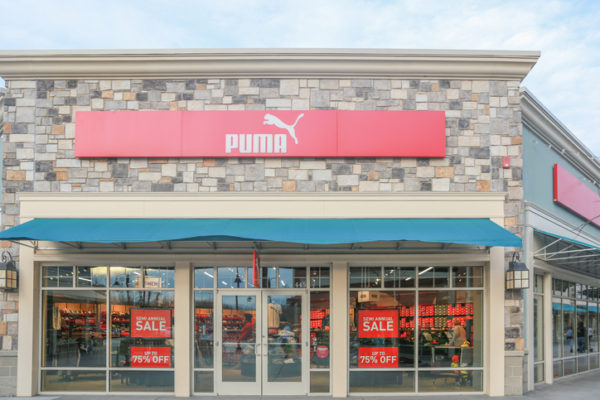
Mac McGuire: I’ve worked on a number of collaborations with entertainment assets, professional athletes, also just media or fashion focused companies and they’re all different. Sometimes it’s just a model. For example, I built a shoe with Adriana Lima. She’s one of Victoria’s secrets key models and she kind of was in the heyday when the Victoria Secret fashion shows were everything. We had signed her for our training side of our business and decided that as part of her contract, we were going to do a signature Adriana Lima shoe. That was one of the most fun collaborations I’ve done. She was unbelievable to work with, just willing to get in there and understand what we were doing. She gave consistent feedback and had a clear direction on what the shoe should look like.
Mac McGuire: Me and my designer, Marvin Williams, were able to fly to London to meet with her, then meet with her a couple times in New York city. Every meeting with her was so kind, and she was so patient. And these shoes take at least a year to build. And so sometimes it’s like, “When do I get to see this thing?” And looking on it at a computer is only cool for so long. And so that was an amazing collaboration that I was able to work on, just from a storytelling aspect and connecting to this kind of fashionable muse, like Adriana Lima, and where we distributed that shoe, we had it in some of the coolest retailers in the world with Kip and things like that. And so that was a really fun, kind of more style focused shoe, but just to build a signature shoe for someone so impactful was an amazing process for me.
Mac McGuire: Other ones that we’ve looked at, a cool one from the professional athlete’s side that it’s not so much US focused, but there’s a guy in India named Virat Kohli. He’s one of the most famous cricketers in the world. And so, a lot of US people don’t know this name, but he’s one of the highest paid athletes in the world. He’s an amazing guy too. And so, he has his own brand called One8, and Puma does a partnership with One8. I’ve been able to work with him on a number of shoes and bring those to market. And again, he’s a great guy, he’s really famous, really, really rich, but he’s so humble, easy to work with, and again, has a clear point of view on what the shoes should do and look like and how they should perform. And so that’s another kind of key highlight, just to work with an athlete of that caliber and on a global scale, it provides you so much more context into this space.
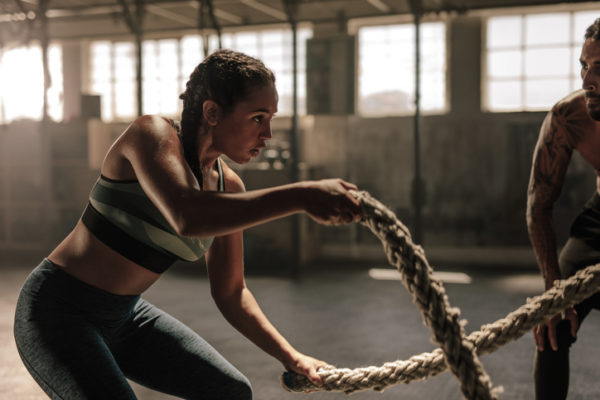
Mac McGuire: So those have been great. Aside from that, a lot of our high fashion and style, focus collaborations, those ones they require more navigation because these people have a brand most times that they’re so passionate about, it’s a smaller scale for them. Sometimes it’s a really high price point and this is like their baby. So, anything that they put their logo on, it has to be perfect. And so, from a communication standpoint, what makes these things successful is when I can represent Puma as a brand and guide the conversation, the direction of the product into where we need it to be and to accomplish what we need it to accomplish. But at the same time, I want to make sure that they have a creative lead in this thing, and they can kind of get involved and make sure from their standards, this is holding up to their brand, and their style, and all of that.
Mac McGuire: A lot of these style focused collaborations I’ve worked on in the past 18 months, two years, they haven’t come out yet. So, I can’t say exactly who they’re with right now, but that’s a whole different thing than the athletes and the entertainment assets, because they know product and they want to get into every detail on the shoe. And so, it’s another cool way to build products. You definitely need to set out some time to accomplish it, regular check-ins, these people are flying all over the world, they’re busy. And so, to get them on a Zoom call or meet them in person can be tough, and so you kind of have to build that timeline in, but in general, those are some of my favorite projects to work on. Just to get in the lab with them and build something cool that holds up to these really influential fashion companies, one of my favorite parts of the job, for sure.
Steve Cunningham: Well, that’s such a great example of true collaboration, right? Like you said, you come in representing the Puma brand, they have their personal brand and their values and style that they stand for, and you have to work together to bring both of those things cohesively into a single product, that’s got to be just such a fascinating process, but I’d imagine it does take a while.
Mac McGuire: Yeah, it does. And it is so cool. And anyone watching this that might have the opportunity to work in collaboration someday, a lot of the things that I run into when I bring some designers in or developers, or anyone is the words you use to talk to them. We have a lot of technical footwear terms like TPU, outsole, midsole, quarter, band, and when you say these things, it’s second nature to us and a lot of times for the partners they’re sitting there, like, “I’ve never heard that.”
Steve Cunningham: Deer in headlights.

Mac McGuire: It all depends on how comfortable the vibe is. They might say, sorry, I don’t know what that means, they might say nothing. And then you just keep going and they’re confused. So, one thing I always try to do is kind of present a shoe to them, or a technology, or whatever vibe we’re going for in layman’s terms and just be able to have them fully understand what we’re working on. The second thing is you have to be calm and collected. They’re not going for the, can I have an autograph, and that’s not what you’re there to do. And so, when you can keep that kind of personable vibe and really talk to them in terms that they understand and get them on board, then you can start to go into the creative process.
Mac McGuire: I think that’s such a big part, and that’s why at Puma, we only send certain group of people to do those types of projects. You need to speak well, represent the brand well, but also be able to guide the conversation in the right direction while keeping them happy and in the driver’s seat as well. So, it’s a cool thing, it’s all about communication and kind of just knowledge around what we can and can’t do. If you can get involved in it, it’s an amazing part of the footwear business, for sure.
What advice or tips would you give to someone at the start of their footwear career?
Mac McGuire: So, my advice to break into this industry is don’t be afraid to apply to these entry level jobs. Who has footwear experience when they’re in college? No one, right? It’s crazy. If I look at my team at Puma alone, the way that we all got to Puma, everyone has some crazy story, right? Just like I told you guys, I networked, found someone, I got an internship out of college. I remember my college advisors were like, “You’re graduating from Boston University and you’re going to take an internship?” And I’m like, “This is my foot in the door moment. This is how I do it.” So, I think networking is so key, right? Just reach out. I’ve hired two guys out of school, had no footwear experience, but when I spoke with them, they had the communication, the vibe that I know will go so far. And now they’ve both been able to get full-time roles at footwear companies.

Mac McGuire: I’m so grateful to be where I am. And so, when I get reached out to, I always connect on a call, always keep them in mind when we have open positions. And so, what seems like kind of a random thing at first to just message me or someone like myself and in the footwear industry, it can go such a long way. And so that’s a big one, network, just talk to people. There’s no harm in it, the worst they can say is no. And the second thing is communication. I think that developers, sales, merch, you have marketing, you have to speak with all of them to keep people up to speed on what you’re doing. You also have to manage communications with designers, the creatives who are drawing it. And you have to tell them this is good, or this is bad because X, Y, Z. And so, if you don’t have that personable relationship with them and you just tell them this sucks, they’re going to get burnt out with you and they’re not going to want to build something together.
Mac McGuire: So that’s another thing I stress is, if you’re new to this industry, maybe we don’t speak as much when we first start and we just really focus on listening. I think that’s such a big thing, just learn because it’s such a specified thing that we’re doing. And so, ask questions, listen in on as many meetings as you can, and gain that knowledge, get yourself involved from there. So, you got to build that base, and then from there it’s all about communication. And so, if you’ve never been in that cross-functional environment before, maybe you’ve done group projects in school, or you’ve been on an athletic team, so when you’re new, you really have to just learn the culture of what you’re working within and tailor your communications to who you’re talking to.
Mac McGuire: I think that’s such a big thing working with creatives and then developers, you got to make sure that you speak to them in the right way and just be yourself, be authentic, and keep it just business focused, and this is the goal we’re trying to do. So, I think communication and communication style to be specific, and then networking, is definitely the way to get into this industry.
Steve Cunningham: Yes, and in terms of communication, like you said, just kind of observing first and seeing, not to say don’t be assertive and get your opinions out there, but coming fresh out of school into a new environment, try to learn it a little bit. And then the networking side, there’s just so many different angles now. It’s not, at least in my opinion, it’s not like you go on the website, you submit a resume, and you go hands off, you can find the person on social media, you can DM them, you can figure out their email, email them, and that stuff makes you stand out, right?
Mac McGuire: Exactly.
Steve Cunningham: It’s a different touch point and maybe you have to do it 10 times to finally get a response. But if it’s something you really want, identify what you want to do, where you want to do it, maybe someone in a position like the one you want to be in, and then try to get an entry level position below them. And if you work hard and you are dedicated to it, you’ll get there.
Mac McGuire: You’re spot on. The last thing I would say to that, because I get this quite a bit, is when you reach out to someone, tell them what you’ve already done to get involved, right, or tell them a position you’re interested in. Sometimes I get the message, “Hey, I want to work at Puma, what jobs are open?” And from there, “I work in product, I’m not in HR, and the website is there.”
Steve Cunningham: Right.
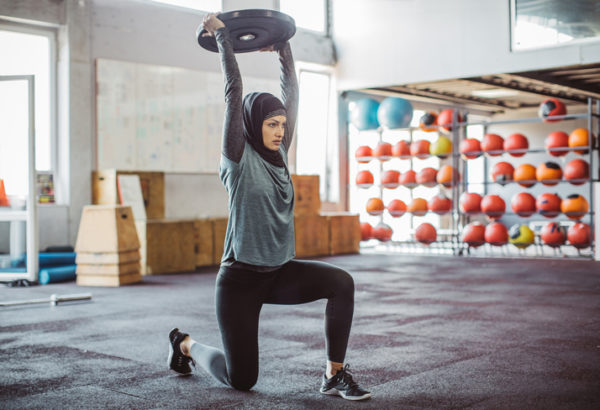
Mac McGuire: There are jobs, you just got to go find them and then tell me, “Hey, I applied to this or I want to apply to this can you write me a recommendation letter or can you vouch for me? Let’s connect and let’s do that.” I think that’s a big part of it, right? Show the person you’re reaching out to what you’ve already done or a little bit of thought into how you want to break into this industry and then, if they’re like myself or like a lot of my coworkers, they’ll for sure connect with you, keep you in mind for future opportunities and you can do it. I think, like I said, everyone has a unique way how they got into this industry. And so, no one’s off limits, everyone can break in. I have guys that were in finance for 10 years and then said, “I want to work in footwear,” and they’re here now. So, you can definitely make it happen.
Steve Cunningham: Even if that particular position doesn’t work out, you’ve at least made a new connection that’s going to keep you in mind in the future. That’s a really interesting insight.
Is there anything else you wanted to add that we maybe didn’t touch on?
Mac McGuire: I can’t vouch enough for this industry. It’s such a tangible thing, right? You send a lot of emails and do a lot of meetings, but then at the end of it you get a shoe and that’s my favorite part. It’s like Christmas morning when the samples arrive and you get to see all your work come to life from a drawing on a pen and paper to an actual shoe in your hand. That aspect of phase and that aspect of a tangible consumer focused product is there’s not that many jobs out there like that, and so if you can get involved in something like that, if that sounds interesting, then go for it because it’s such a rewarding job and there’s so many different aspects to it. So, I just can’t say enough good things about footwear in general.
Steve Cunningham: Mac, this is one of the best conversations I’ve had and this passion for what you do clearly comes out, and your willingness to help others trying to get into it is really admirable. So, I’ve really enjoyed this. So, thanks a lot for your time.
